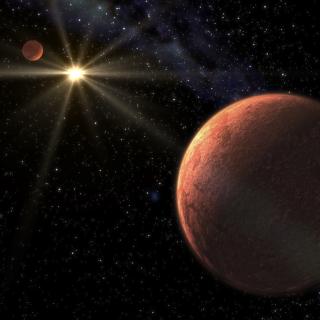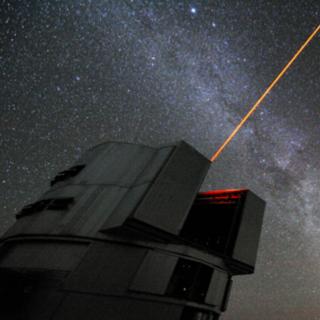Bibcode
Parviainen, H.; Murgas, F.; Esparza-Borges, E.; Peláez-Torres, A.; Palle, E.; Luque, R.; Zapatero-Osorio, M. R.; Korth, J.; Fukui, A.; Narita, N.; Collins, K. A.; Béjar, V. J. S.; Morello, G.; Monelli, M.; Garcia, N. Abreu; Chen, G.; Crouzet, N.; de Leon, J. P.; Isogai, K.; Kagetani, T.; Kawauchi, K.; Klagyivik, P.; Kodama, T.; Kusakabe, N.; Livingston, J. H.; Meni, P.; Mori, M.; Nowak, G.; Tamura, M.; Terada, Y.; Watanabe, N.; Ciardi, D. R.; Lund, M. B.; Christiansen, J. L.; Dressing, C. D.; Giacalone, S.; Savel, A. B.; Hirsch, L.; Parsons, S. G.; Brown, P.; Collins, K. I.; Barkaoui, K.; Timmermans, M.; Ghachoui, M.; Soubkiou, A.; Benkhaldoun, Z.; McDermott, S.; Pritchard, T.; Rowden, P.; Striegel, S.; Gan, T.; Horne, K.; Jensen, E. L. N.; Schwarz, R. P.; Shporer, A.; Srdoc, G.; Seager, S.; Winn, J. N.; Jenkins, J. M.; Ricker, G.; Vanderspek, R.; Dragomir, D.
Bibliographical reference
Astronomy and Astrophysics
Advertised on:
3
2024
Journal
Citations
2
Refereed citations
2
Description
We validate the Transiting Exoplanet Survey Satellite (TESS) object of interest TOI-2266.01 (TIC 8348911) as a small transiting planet (most likely a super-Earth) orbiting a faint M5 dwarf (V = 16.54) on a 2.33 d orbit. The validation is based on an approach where multicolour transit light curves are used to robustly estimate the upper limit of the transiting object's radius. Our analysis uses SPOC-pipeline TESS light curves from Sectors 24, 25, 51, and 52, simultaneous multicolour transit photometry observed with MuSCAT2, MuSCAT3' and HiPERCAM, and additional transit photometry observed with the LCOGT telescopes. TOI-2266 b is found to be a planet with a radius of 1.54 ± 0.09 R⊕, which locates it at the edge of the transition zone between rocky planets, water-rich planets, and sub-Neptunes (the so-called M dwarf radius valley). The planet is amenable to ground-based radial velocity mass measurement with red-sensitive spectrographs installed in large telescopes, such as MAROON-X and Keck Planet Finder (KPF), which makes it a valuable addition to a relatively small population of planets that can be used to probe the physics of the transition zone. Further, the planet's orbital period of 2.33 days places it inside a `keystone planet' wedge in the period-radius plane where competing planet formation scenarios make conflicting predictions on how the radius valley depends on the orbital period. This makes the planet also a welcome addition to the small population of planets that can be used to test small-planet formation scenarios around M dwarfs.
Related projects

Very Low Mass Stars, Brown Dwarfs and Planets
Our goal is to study the processes that lead to the formation of low mass stars, brown dwarfs and planets and to characterize the physical properties of these objects in various evolutionary stages. Low mass stars and brown dwarfs are likely the most numerous type of objects in our Galaxy but due to their low intrinsic luminosity they are not so
Rafael
Rebolo López

Exoplanets and Astrobiology
The search for life in the universe has been driven by recent discoveries of planets around other stars (known as exoplanets), becoming one of the most active fields in modern astrophysics. The growing number of new exoplanets discovered in recent years and the recent advance on the study of their atmospheres are not only providing new valuable
Enric
Pallé Bago

Galaxy Evolution in the Local Group
Galaxy formation and evolution is a fundamental Astrophysical problem. Its study requires “travelling back in time”, for which there are two complementary approaches. One is to analyse galaxy properties as a function of red-shift. Our team focuses on the other approach, called “Galactic Archaeology”. It is based on the determination of galaxy
Matteo
Monelli